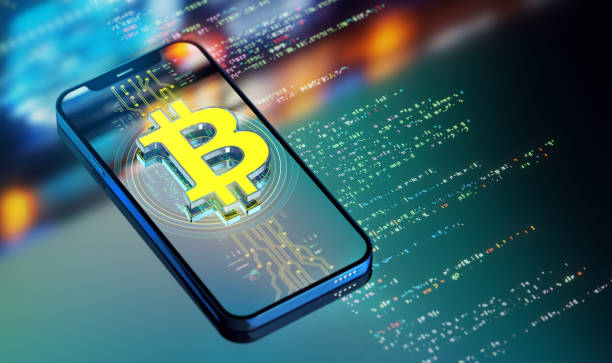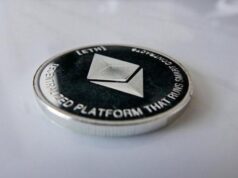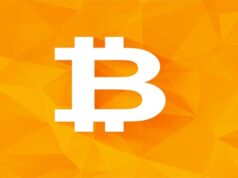
Blockchain is a decentralized digital system that records transactions across a network of computers. This innovative technology has improved the creation of applications by providing a secure and transparent framework.
Blockchain application development can benefit different industries. Finance, healthcare, supply chain, and sectors in addtion to these can use blockchain to enhance efficiency. According to Statista, around 30% of the blockchain market value is in the banking sector.
However, the success of blockchain app development depends on more than just the capabilities of this digital ledger. Detailed planning and seamless execution are also important. Thus, strategizing to navigate complex situations in the blockchain development process becomes necessary.
In this article, you will learn how to develop blockchain applications. Read until the end to find out what steps you should take to create your solution successfully.
Benefits of Blockchain App Development
Before diving into the process of creating applications, let’s look at the advantages of utilizing blockchain.
Increased Transparency
Blockchain app development brings heightened openness. Through the decentralization of data across a network, every participant has access to the entire chain. Thus, a blockchain system can ensure a shared, verifiable record of transactions. It cultivates a visible ecosystem where every interaction is indelibly recorded.
Enhanced Security
Another pivotal advantage of blockchain app development is guaranteed security. Each block in the chain has a unique digital fingerprint for data – a cryptographic hash. It is an algorithm-generated code that uniquely represents the contained data. Even a slight change in input will lead to a significantly different hash, making it extremely difficult to alter information without detection. This transparency minimizes the risk of fraud and fosters trust among users.
Other mechanisms that facilitate security are proof-of-work and proof-of-stake. They ensure that data stored on the blockchain is practically immune to unauthorized access.
Reduced Costs
The decentralized system diminishes the need for intermediaries and minimizes associated costs. Smart contracts with coded terms automate various functions. For example, you can predetermine certain terms of the agreement. When the parties execute them, smart contracts automatically close the deal. Thus, there is no need for manual intervention. Furthermore, it’s easy to identify discrepancies, as every transaction on the blockchain is recorded and visible to all participants. This public ledger enables quick detection of inconsistencies and prevents costly errors.
Faster Transactions
Another benefit of blockchain app development is faster operations. For example, smart contracts automate the verification and execution of transactions. This automation reduces the time for validation, approval, and reconciliation.
The decentralized system reduces the bureaucracy linked to traditional financial systems. It empowers almost instant transactions. This feature helps speed up cross-country payments and digital asset exchanges.
Foundational Steps on How to Build a Blockchain Application
Idea Generation
Starting on the journey to build a blockchain app requires a strong concept. You have to identify a problem that this technology can effectively solve. Successful blockchain app ideas often come from recognizing inefficiencies or security concerns in existing systems.
Consider the success of decentralized finance (DeFi) applications. They have revolutionized traditional financial services by providing inclusive alternatives. For example, decentralized exchanges offer better security by allowing users to retain control of their private keys. Thus, there is an opportunity to avoid the risk of system-wide breakdowns common in traditional financial systems.
Market Research and Feasibility
The next crucial step in building a blockchain app is market study. First, you must identify key competitors and understand their strengths and weaknesses. This detailed analysis involves studying their market share, pricing strategies, distribution channels, and customer base. Thus, you can determine areas for improvement and innovation.
Next, define your target audience, as well as their wants and needs. Understanding these aspects is essential in developing blockchain applications that resonate with users. Tailoring the solution to address specific pain points ensures relevance in a competitive environment.
Also, financial feasibility and sustainability form the base of a viable blockchain app. A precise assessment of development costs, maintenance, and potential revenue shapes a robust economic strategy.
Selecting the Right Blockchain Technology
The following step in successful blockchain app development is choosing the optimal technology. Firstly, you have to understand the difference between public and private blockchains. Public ones, like Ethereum and Bitcoin, are decentralized and open to anyone. On the contrary, private blockchains restrict access to a specific group of participants.
Choosing the appropriate infrastructure is equally critical. You can utilize an existing system, like Blockchain-as-a-Service (BaaS), for streamlined development.
Another option is crafting a custom one tailored to specific needs. Among available frameworks and platforms, Ethereum stands out for its smart contract functionality. Solidity is the programming language for building an Ethereum blockchain app. If you choose Solana blockchain app development, you will work with Rust and C programming languages. You can hire Hyperledger developers who utilize Go and Java to develop enterprise solutions. Corda, designed for financial applications, employs Kotlin and Java.
Development and Testing
This crucial step involves the backend development. At this stage, you have to create smart contracts, nodes, and consensus algorithms. Smart contracts define the rules and logic of transactions. Nodes validate and store transactions. Consensus algorithms, such as proof-of-work, ensure the agreement on transaction validity. Moreover, they define the order in which nodes are added to the blockchain.
The front-end development is equally significant. You have to consider the user interface and experience. You should have an intuitive and appealing design to facilitate your target audience’s interaction. The seamless navigation contributes to the app’s adoption. API integrations determine how external systems interact with the developed blockchain solution. Robust integration with external systems allows for a broader range of functionalities and expands the application’s utility.
Testing adds to the reliability, security, and functionality of the blockchain app. Various methodologies exist, such as unit, integration, and end-to-end testing. This phase lets you identify and fix vulnerabilities or issues before the application launch.
Deployment and Maintenance
It is important to select the appropriate environment for deployment. The choice depends on scalability, security, and the intended user base. It should align with the specific requirements of the blockchain app.
The initial launch is a momentous occasion, but the process doesn’t end there. Iterative updates are essential for adapting to user feedback. At this stage, you can address unforeseen issues and incorporate new features.
Regular monitoring of the blockchain app’s performance, security, and user engagement helps identify any emerging problems promptly. Checking metrics such as transaction speed, network stability, and user activity allow for proactive adjustments and optimizations.
Conclusion
Starting the journey of blockchain app development requires detailed planning and execution. To build your first blockchain app, you must go through the ideation and market research process. Next, you will move on to selecting the right blockchain technology, as well as development and testing. Continuous improvement is essential, ensuring adaptability to user needs and technological advancements.
FAQ
How to build a blockchain app from scratch?
For blockchain applications development, start with a robust idea. Next, conduct thorough market research. Then choose the right blockchain technology, focus on development, and continuously improve the solution.
Which technology is best for developing a blockchain app?
The choice of blockchain app development technology depends on specific requirements. Ethereum is good for its smart contract functionality. Hyperledger offers enterprise-focused solutions due to its modular and customizable framework. Consider factors such as scalability and security to determine the best fit for your project.
What coding language is used in blockchain?
The coding language depends on the platform. For example, Solidity works for Ethereum, Go and Java – for Hyperledger, and Rust and C – for Solana.


































